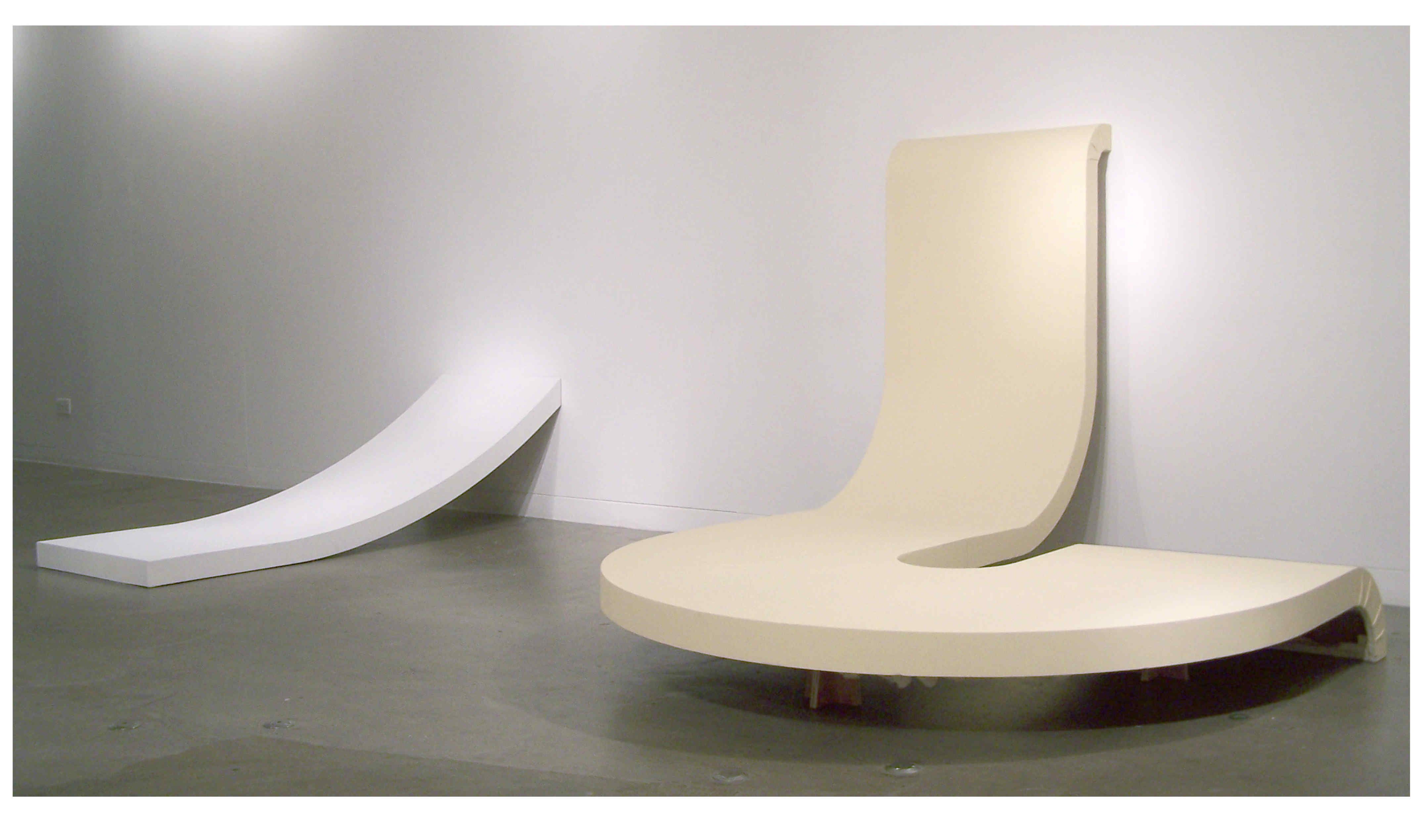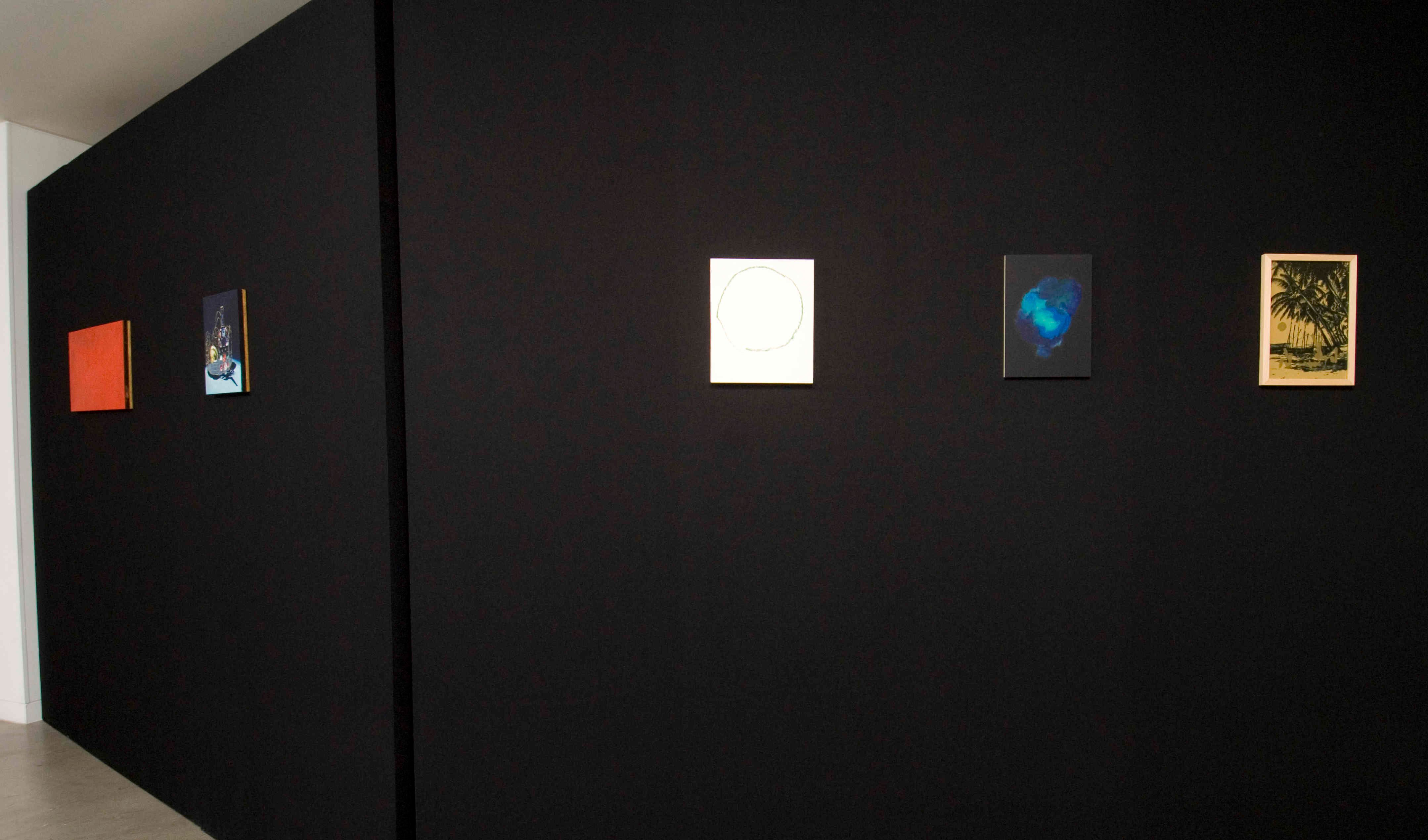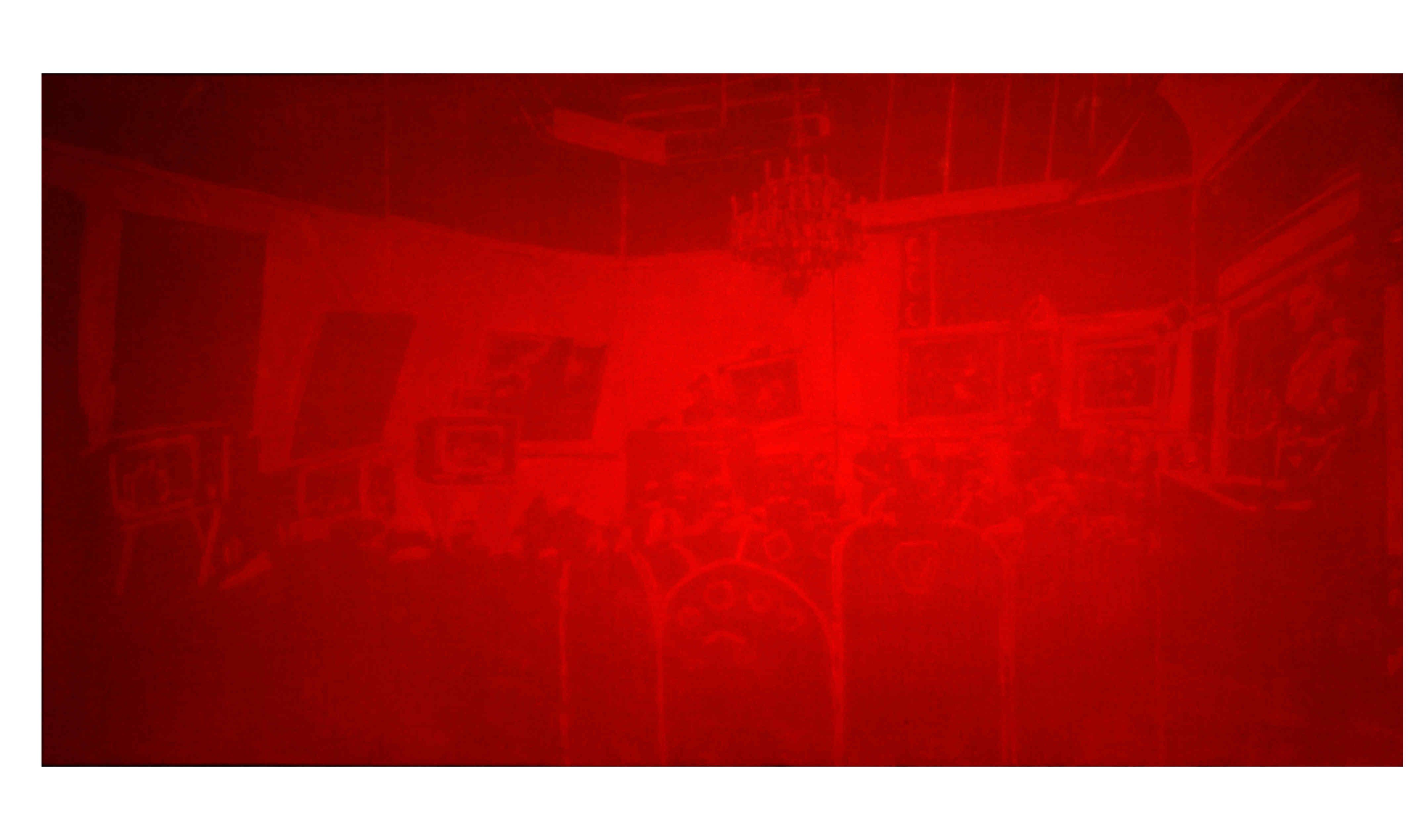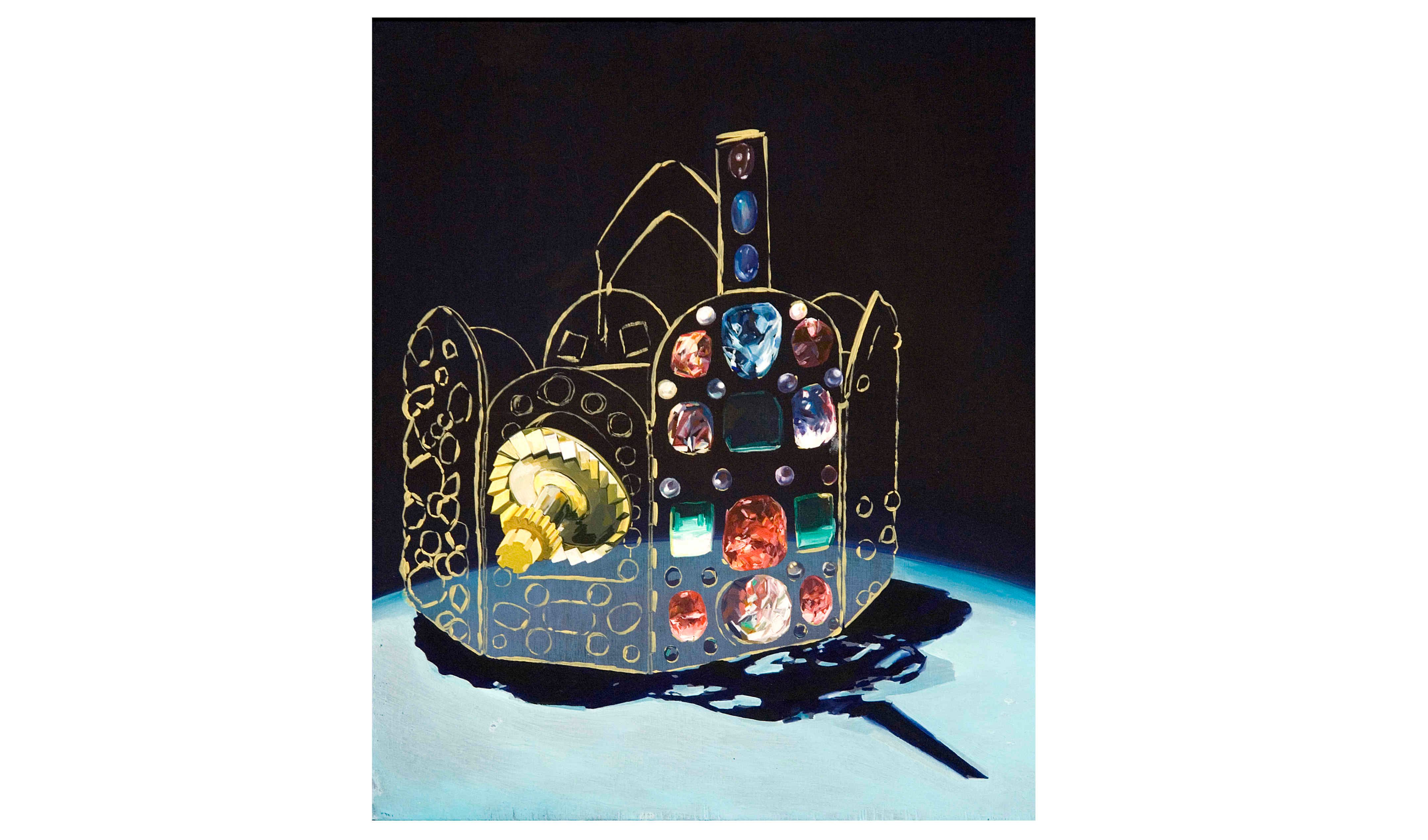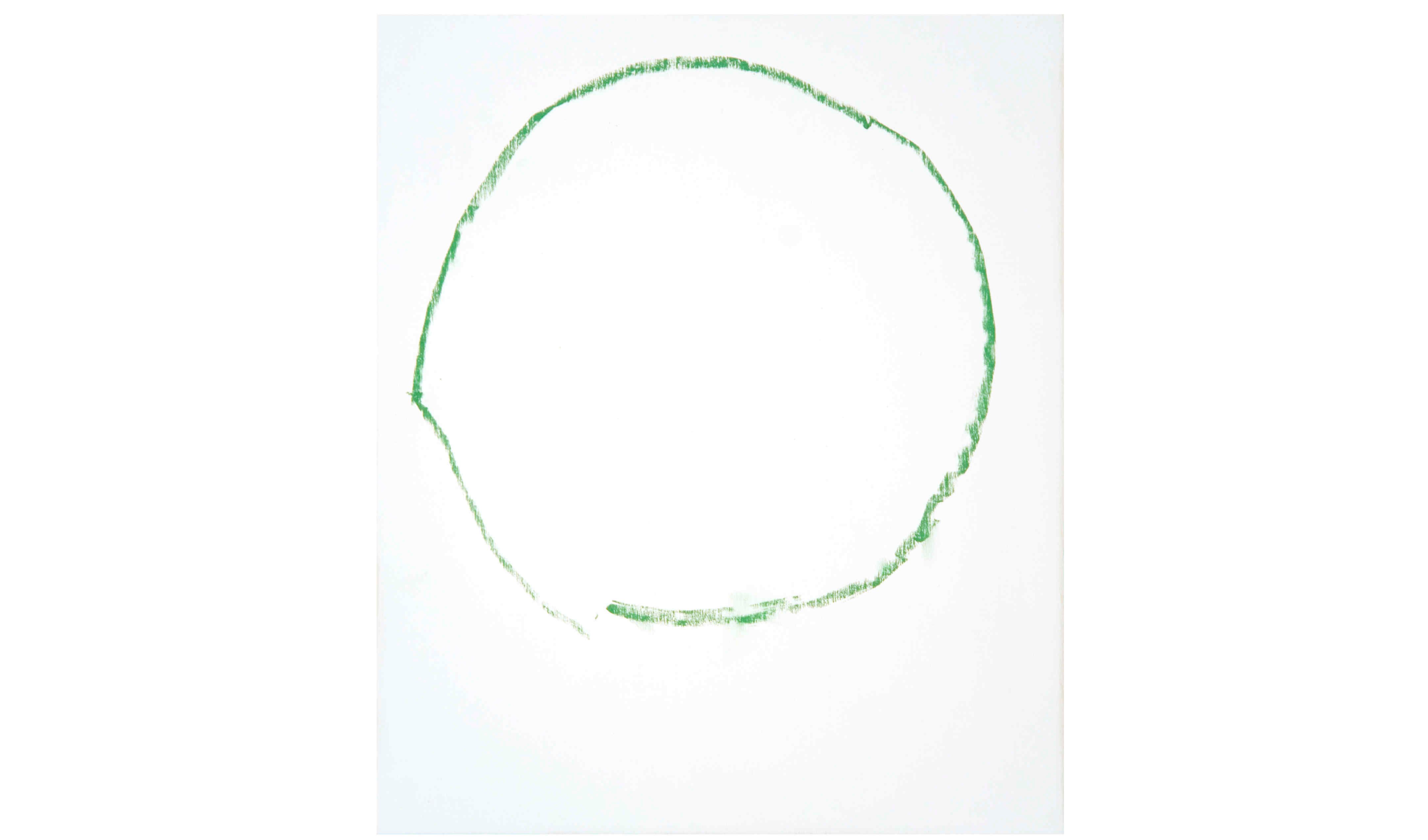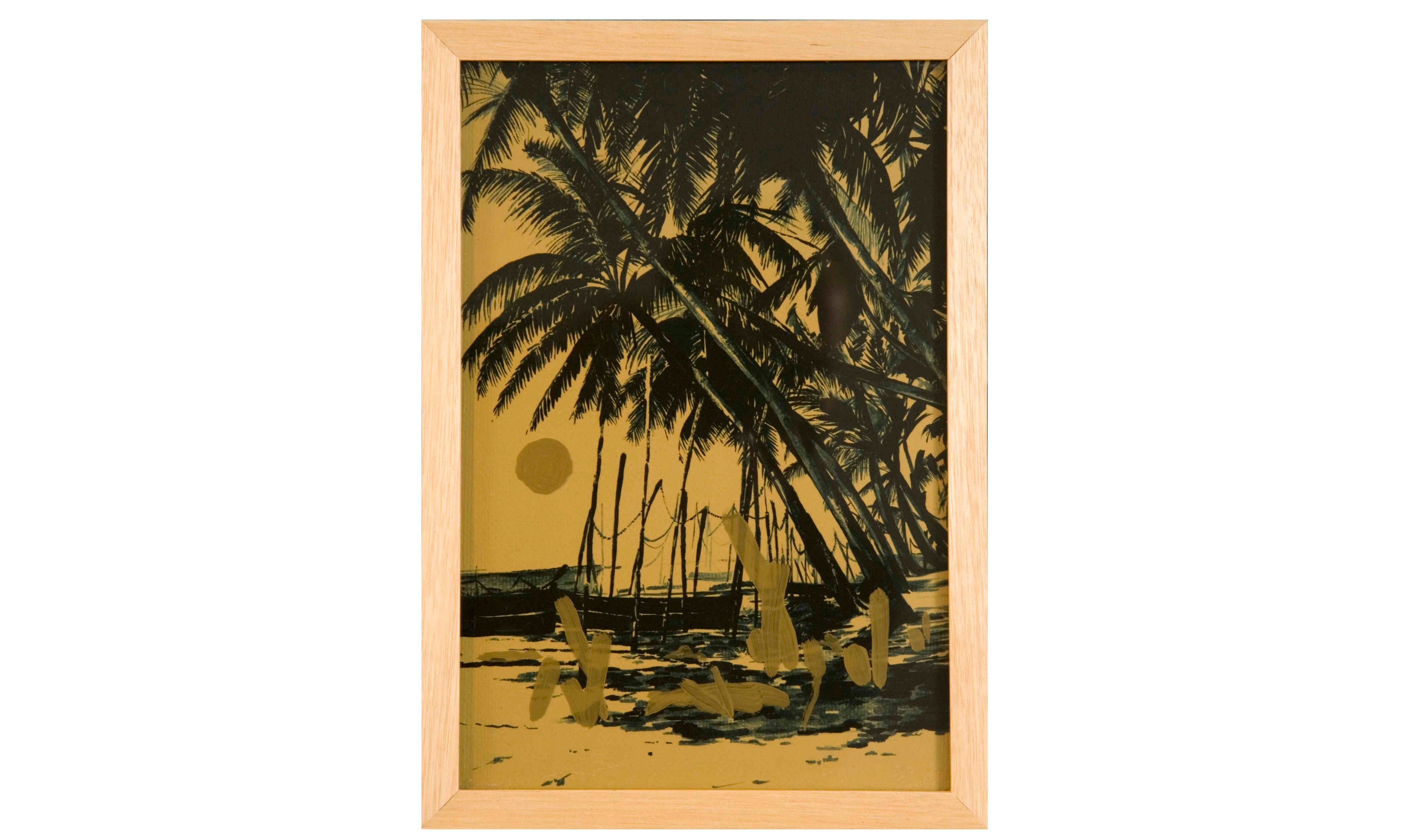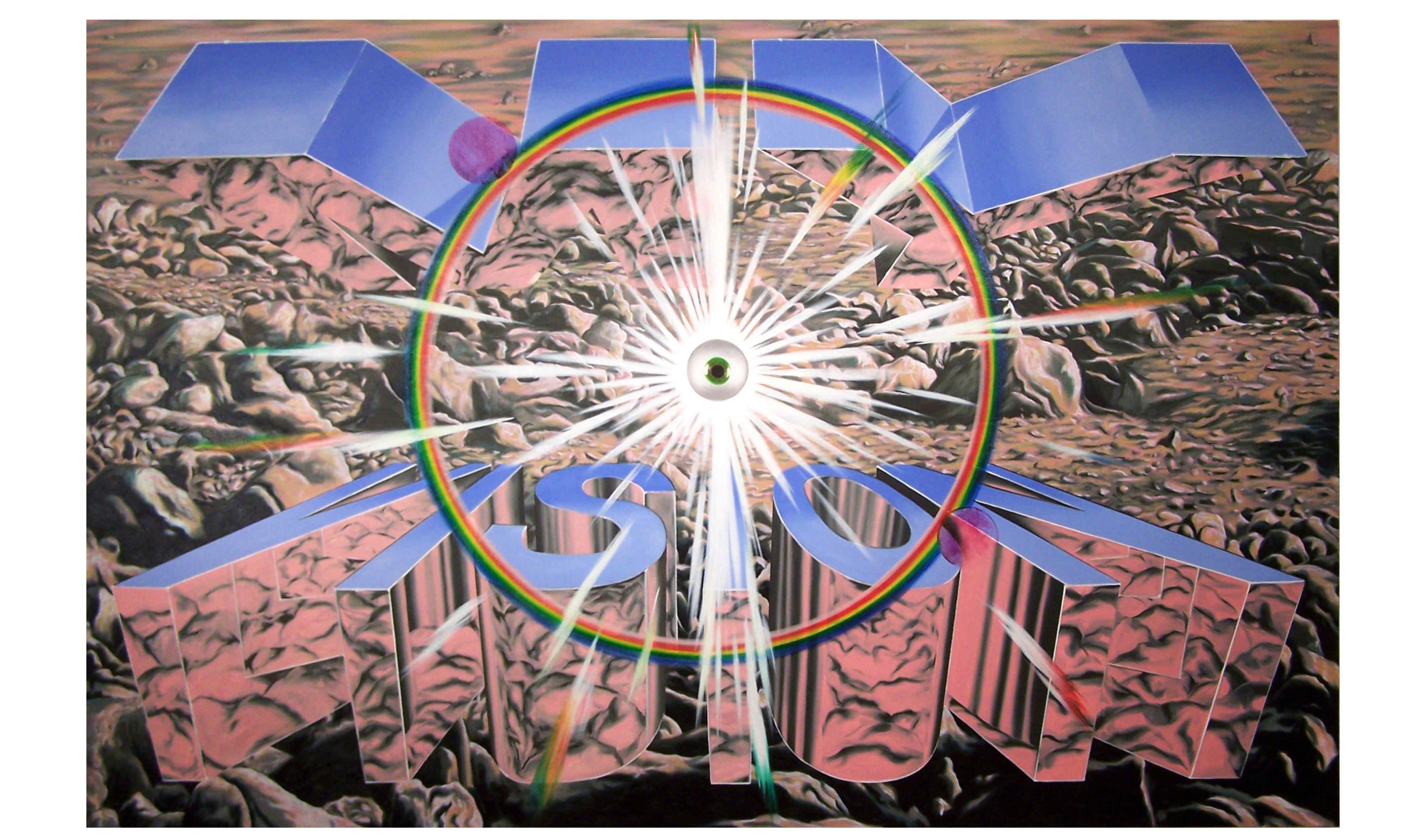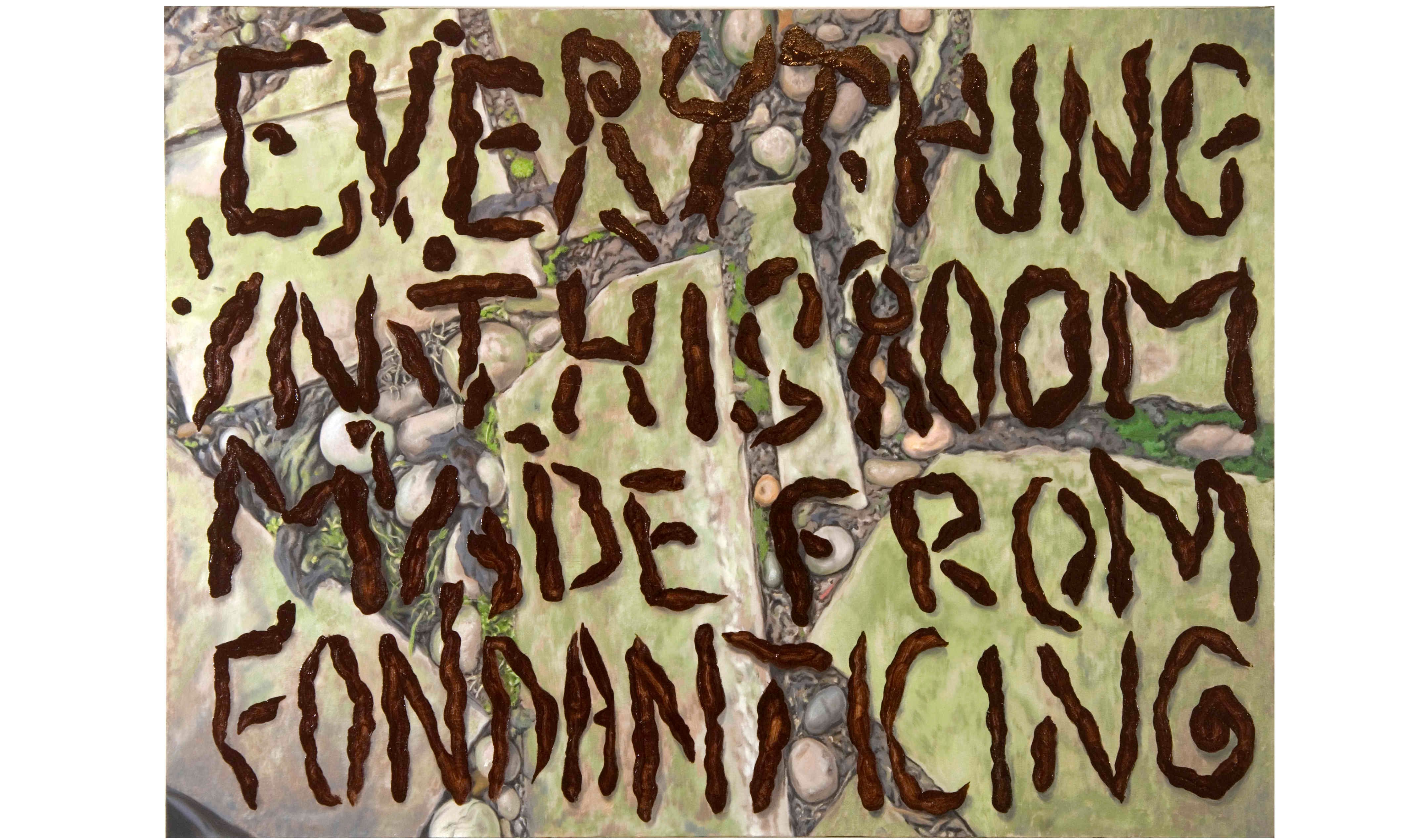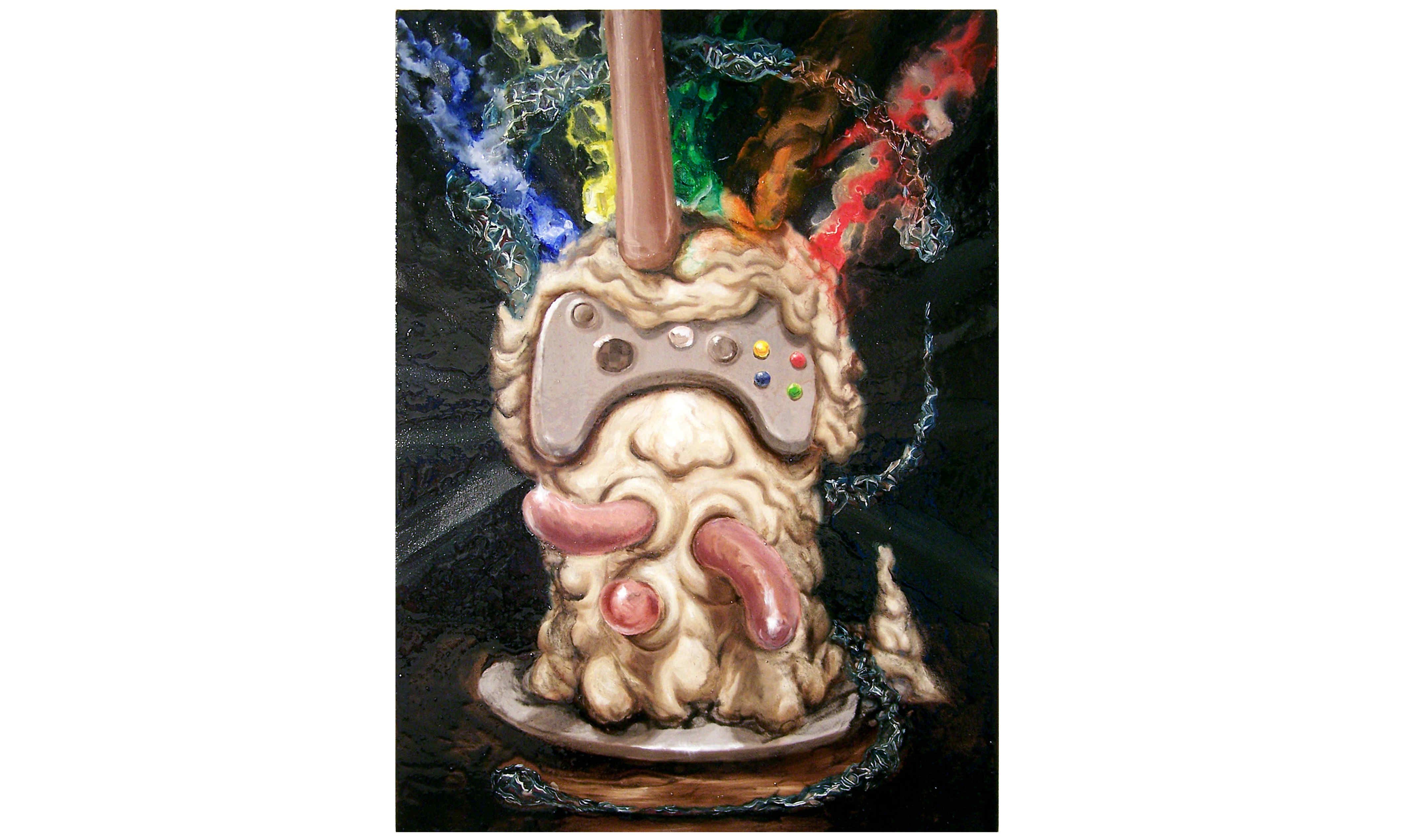14 Jan 2009 to 30 Jan 2009
Artists in this exhibition: Nathan Barlex, Robin Footitt, Andrew Larkin
Substance once attached to visual recognition has become compromised and reality has distanced itself from experience. When considering a painting the image making process can also fail on the provision of how we relate this act of cognition to the sensory in an information age. To investigate a ghost tank challenges the idea of perception – a vessel that cannot be filled in a literal sense but can occupy time and space outside of a standard model.
Blyth Gallery presents Ghost Tank, the work of Royal College of Art MA Painting students Nathan Barlex, Robin Footitt and Andrew Larkin. Activating a corporeal network, which exists both in practice and vision, the exhibition takes the form of both site-specific intervention and reconfiguration of material on the picture plane.
Nathan Barlex incorporates everyday objects, places and ideas into works that test the limits of representation and fiction. Painting his way through relationships found between scale, context and materiality Barlex endeavours to compound the familiar and unsettles the strange. Sliding in and out of modes of representation, his painting encourages placement of the art object into an ever-changing degree of certainty. As a premise for the nature of the visual plane, the notion of visual and cognitive perception becomes intriguingly fallible.
The prospect of capturing an image opens up virtual reality to civilisation in Robin Footitt’s practice. Naming and tagging the abundance of reference material available on search engines is one way that the nature of digital can be solidified. By their own authority, pixels encompass the expanse between creation and our own hand in it – the measurement of vast numbers to represent resolution and the smallest element with controllable colour and brightness.
Andrew Larkin has probably written this hasn't he – in the third party; a state outside of oneself - it is this incipience of binary phases of cognition that infiltrate his work. It is what is indiscernible that ambiguously appears more important to him than what is and whilst toying with process, physical space and multiplicity, it is the charade of the artist eluding the viewer as to what the work truly is, that is the work.

